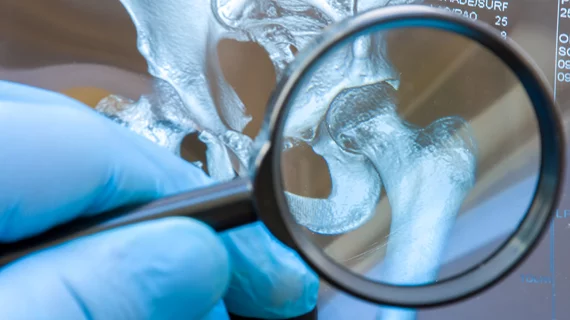Although flat plate radiographs and fluoroscopic imaging performed during hip replacement surgery come at the expense of additional time and money, a recent deep dive into the numbers revealed such imaging is cost-effective.
Total hip arthroplasty (THA) is a major and costly surgery. Appropriate positioning of the acetabular and femoral components is crucial in restoring proper biomechanics for the patient. Mispositioning or improper alignment of these components increases the likelihood of dislocation, instability and poor range of motion, and could eventually necessitate a THA revision, an additional surgery with a more difficult recovery.
The use of intraoperative imaging during THA differs based on the surgeon's preference, and the available research is both limited and varied. Some studies have found it to be beneficial, while others have uncovered no significant differences in outcomes with the use of radiographs or fluoroscopy during hip replacement surgery.
“Determining the cost-effectiveness of imaging modalities could help inform clinical decision-making and indicate (the) need for future research on intraoperative imaging utility,” corresponding author Gregory J. Kirchner, MD, with the Department of Orthopaedics and Rehabilitation at Penn State College of Medicine, and co-authors hypothesized.
To assess the cost-effectiveness of intraoperative imaging during THA, the experts conducted a break-even analysis that combined the cost of imaging, revision rates and the cost of revision surgery to calculate the final revision rate required in order to merit the added imaging expense.
“Cost-effectiveness for intraoperative imaging is maintained through a broad range of theoretical intraoperative imaging prices, THA revision rates, and THA revision costs,” the experts explained.
The research revealed that intraoperative fluoroscopy costs an average of $194 for an additional four minutes in surgery. If only 1 revision out of 400 THAs is prevented, the use of fluoroscopy in every one of those procedures is warranted.
Similarly, cost-effectiveness was achieved using flat plate radiographs if 1 revision out of every 385 THAs was avoided. That expense averaged $201 for four minutes in the operating room.
While the results of this study were based on the theoretical value cost-effectiveness (charges and acquisition times vary widely between practices), the authors argue that their break-even analysis can be utilized by any surgeon for any intraoperative imaging technique.
You can view more detailed number in the Journal of Arthroplasty.

